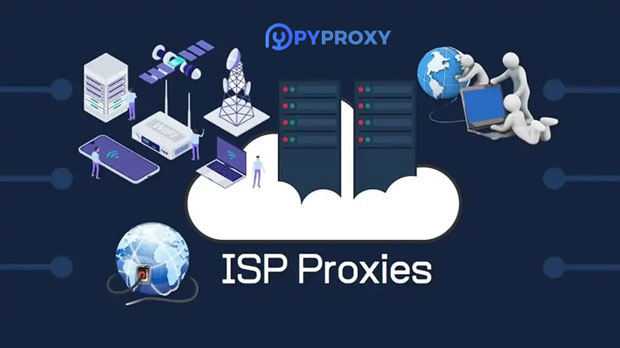The use of socks5 proxies has become increasingly popular among both individuals and enterprises, each seeking different benefits from this type of network tool. While both groups can benefit from the enhanced privacy, security, and functionality that Socks5 proxies offer, the needs and expectations differ. For individual users, the focus is often on privacy, access to geo-restricted content, and anonymity. On the other hand, enterprises prioritize high-speed performance, scalability, and security to support their larger-scale operations. This article will explore these two different user perspectives and analyze which group benefits more from Socks5 proxies. 1. Understanding socks5 proxyBefore diving into the specifics of how Socks5 proxies suit individual or enterprise users, it’s important to understand what a Socks5 proxy is and how it works. A Socks5 proxy acts as an intermediary server between the user and the internet, forwarding traffic between the two. Unlike traditional proxies, Socks5 can handle a wide range of protocols such as HTTP, FTP, and even email traffic. The main advantage of Socks5 over other proxy types is its ability to manage a variety of traffic types, offering greater versatility in handling internet data. Additionally, Socks5 proxies are known for their strong security and anonymity features.2. Socks5 Proxy for Individual UsersFor individual users, Socks5 proxies can be particularly useful in various situations. Let's explore some key aspects of how individuals benefit from this technology:2.1. Enhanced Privacy and AnonymityOne of the primary reasons individuals use Socks5 proxies is to protect their online privacy. Socks5 allows users to mask their IP addresses, providing a layer of anonymity when browsing the internet. This feature is beneficial for those who want to keep their personal data private, avoiding tracking by websites, advertisers, or even malicious entities. Socks5 proxies also do not alter the traffic, making them less likely to cause disruptions when accessing websites or streaming services.2.2. Access to Geo-Restricted ContentAnother key advantage for individuals is accessing content that may be geographically restricted. Many streaming platforms and websites limit access based on the user's location, which can be frustrating for those seeking to access content from other regions. By using a Socks5 proxy, individuals can route their traffic through a server located in a different country, effectively bypassing these restrictions and accessing global content.2.3. Bypassing CensorshipFor individuals living in regions with heavy internet censorship, Socks5 proxies can provide a valuable solution. Many countries impose restrictions on access to certain websites or services, making it difficult for their citizens to freely browse the internet. By using a Socks5 proxy, individuals can bypass these restrictions, allowing them to access the information they need without fear of censorship.2.4. Lower Resource DemandsSocks5 proxies are often less resource-intensive compared to other types of proxies. This makes them an ideal choice for individual users who are looking for a solution that doesn’t require significant hardware or software upgrades. As they do not interfere with the user’s traffic, Socks5 proxies are efficient and can operate on devices with limited processing power, such as smartphones or personal computers.3. Socks5 Proxy for Enterprise UsersEnterprise users typically have a different set of priorities and requirements when it comes to choosing a proxy service. For businesses, the main concerns are performance, scalability, and security. Let's explore how Socks5 proxies can serve enterprise needs:3.1. Scalability and FlexibilityBusinesses often require the ability to handle large amounts of internet traffic, particularly in industries such as e-commerce, digital marketing, and data analytics. Socks5 proxies are highly scalable, meaning enterprises can deploy them across multiple devices and locations without significant performance degradation. This is a crucial factor for enterprises that need to maintain high-performance networks to support their operations.3.2. Improved Security for Corporate NetworksEnterprises must prioritize security, especially when dealing with sensitive customer data or proprietary information. Socks5 proxies offer a high level of security by encrypting traffic between the user and the proxy server. This helps protect businesses from cyberattacks such as data interception, man-in-the-middle attacks, or DDoS attacks. Furthermore, Socks5 proxies can be used to restrict access to certain websites or services, adding an extra layer of security to corporate networks.3.3. Load Balancing and Performance OptimizationSocks5 proxies are capable of distributing network traffic across multiple servers, improving load balancing and ensuring that businesses can maintain optimal performance during peak usage times. This is especially important for businesses that rely on uninterrupted internet access for critical operations. Load balancing with Socks5 proxies helps prevent network congestion and ensures a smooth user experience for both employees and customers.3.4. Supporting Large-Scale OperationsFor enterprises that need to manage large-scale operations, such as global supply chains or international customer bases, Socks5 proxies provide an effective solution. They allow businesses to connect to different regions and access local resources without worrying about the limitations of traditional proxy services. With Socks5, enterprises can ensure that their global operations run smoothly, regardless of where they are located.4. Key Differences Between Individual and Enterprise UsageWhile both individual and enterprise users can benefit from Socks5 proxies, there are notable differences in how each group utilizes the technology. For individuals, the focus is largely on anonymity, bypassing restrictions, and accessing content. They typically require fewer proxies and have lower traffic demands. In contrast, enterprises need proxies that can handle high traffic volumes, provide enhanced security for sensitive data, and support large-scale operations. Enterprises also need more customization and flexibility, as well as the ability to optimize their networks for maximum performance.5. Conclusion: Which Group Benefits More from Socks5 Proxies?Both individual and enterprise users can enjoy the benefits of Socks5 proxies, but the suitability of this proxy type depends on the specific needs of the user. Individuals tend to prioritize privacy, access to restricted content, and ease of use. In contrast, enterprise users are more concerned with security, scalability, and performance optimization to support their large-scale operations. While both groups can find value in Socks5 proxies, enterprises may have more complex requirements, making the proxy more essential for them to ensure smooth, secure, and efficient operations.In summary, Socks5 proxies are versatile tools that can serve both individual and enterprise users effectively. The decision to use a Socks5 proxy should be based on the specific requirements of the user, with individuals seeking privacy and accessibility, while enterprises focus on security, scalability, and performance.
Jan 14, 2025
![arrow]()




























































